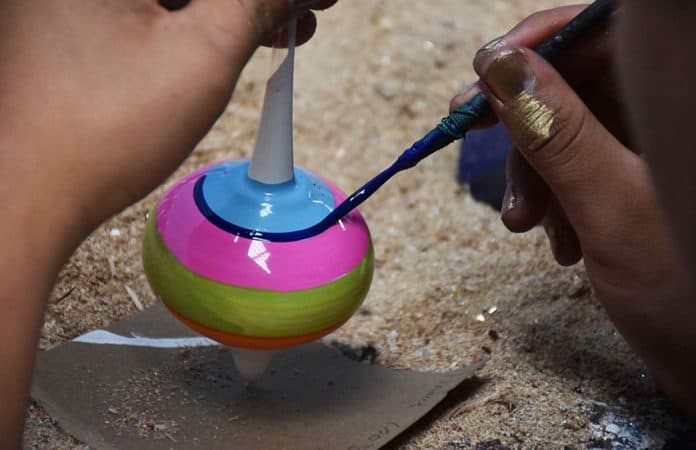With 400 stores and factories making and selling artisanal Christmas ornaments (called esferas in Mexico), Chignahuapan, Puebla is the place to go for Christmas decorations — especially artisan-designed ones. Between all the factories here, they make an estimated 70 million ornaments.
Esfera production in Chignahuapan began in 1965 with one man: Rafael Méndez Nuñez, a chemical engineer with an interest in making them who moved to Chignahuapan.
His first esferas were simple, undecorated bulbs; now there’s an almost endless variety made by several factories — from small round bulbs to elaborate designs that look like piñatas and hot-air balloons.
Almost all glass ornaments esferas have one thing in common: they start out as a simple Pyrex tube. But the process from tube to a bauble hanging from your Christmas tree is anything but simple.
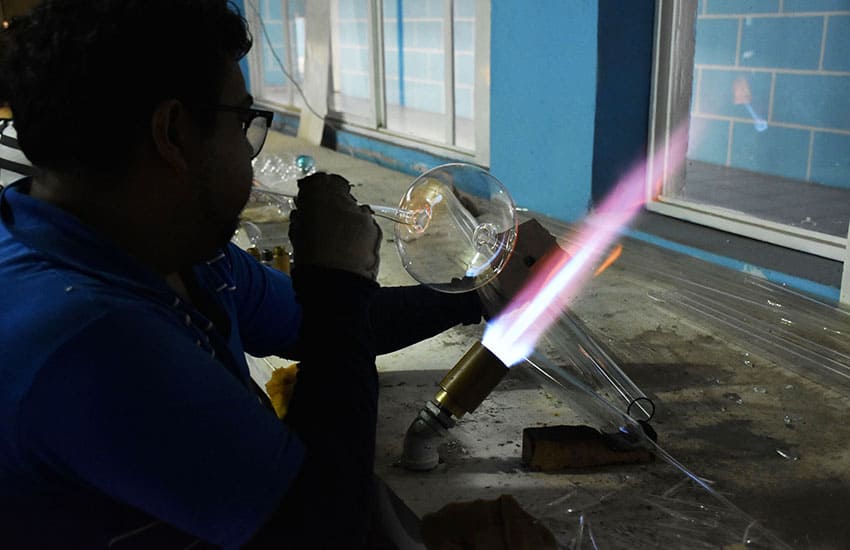
Castillo de la Esfera (The Ornament Castle), the largest producer of esferas in Chignahuapan, offers tours of its factory, and Arturo Amezcua Muñoz, the director of online sales, was my guide.
The first step in making an esfera is heating the glass tube until it softens and glows a bright orange. The artisan, called a globeador, then blows steadily into the open end of the tube.
“It takes about two weeks to learn the basics, “ said Luís Rivera. The large bulb he was making takes about a year to learn how to do.
Next, the bulbs are coated with a silver solution.
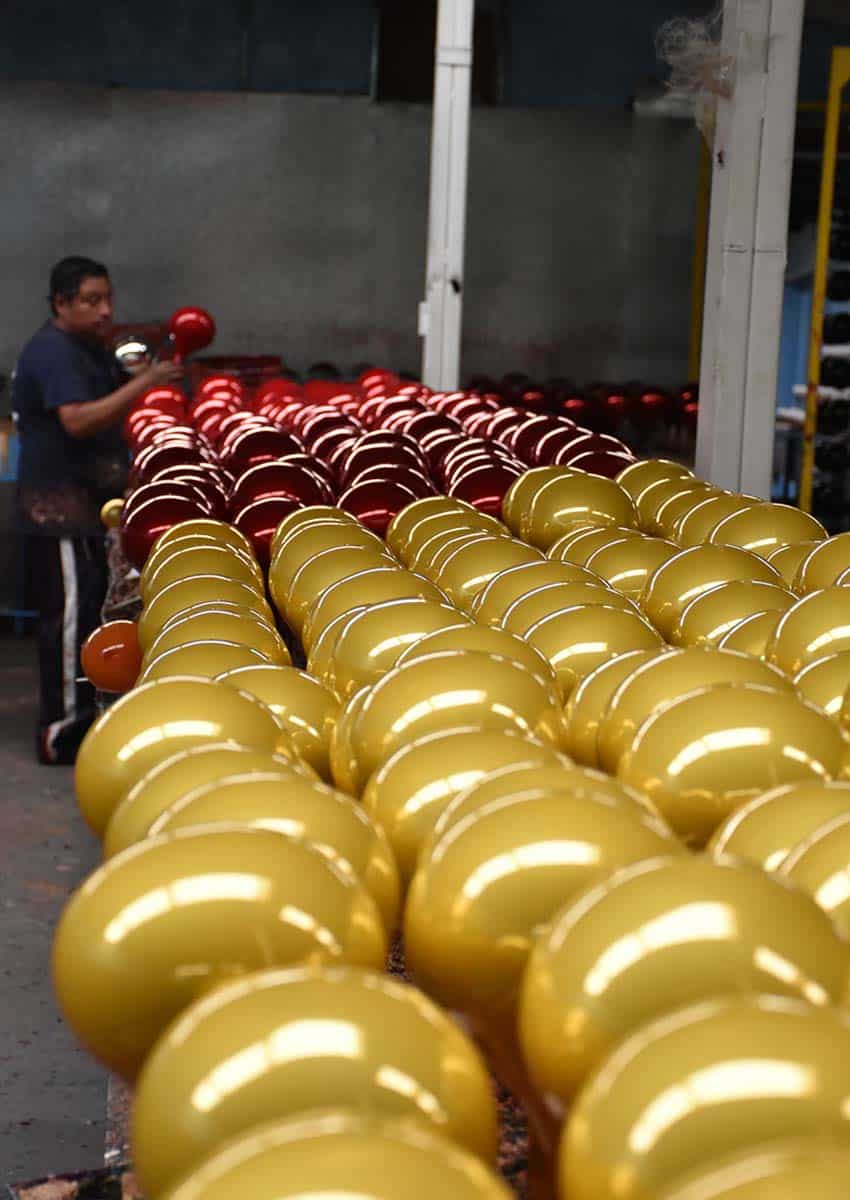
“This is done in a chamber,” explained Amezcua. “The bulbs are transparent, and this [step] gives them higher quality and makes them shine.”
Four years ago, after decades of using glass, the company expanded into making esferas from plastic, which are better for exporting because they don’t break.
Unused plastic is white, and those bulbs are also coated with the silver solution. They also make large black bulbs from recycled plastic, which aren’t coated. Both are made using molds.
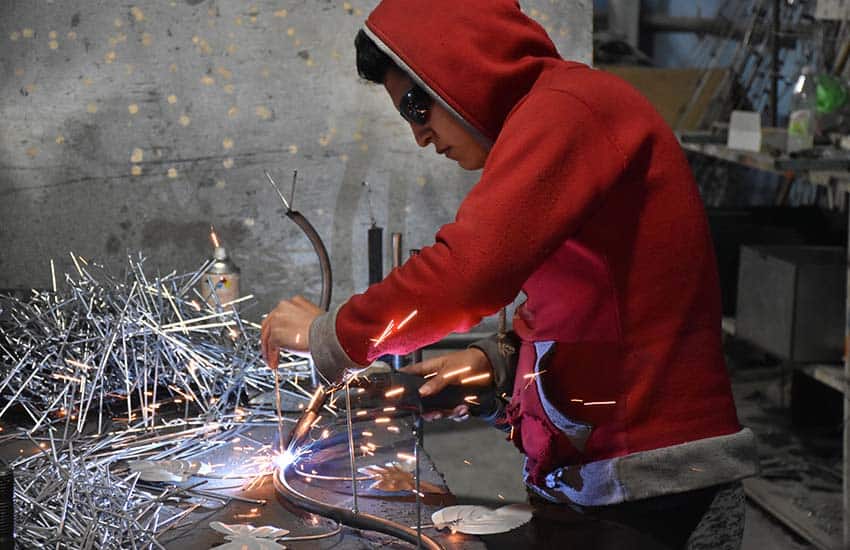
Rafael Romero Sánchez, in the painting workshop, was dipping silver-coated bulbs into purple paint. As he removed it, gave it a quick twist with his wrist to evenly cover it.
Nearby, his brother Jaime Romero Sánchez was coating larger bulbs with red paint. “Many employees are relatives,” Amezcua mentioned.
Once the bulbs are dry, they’re sent to the decorating workshop.
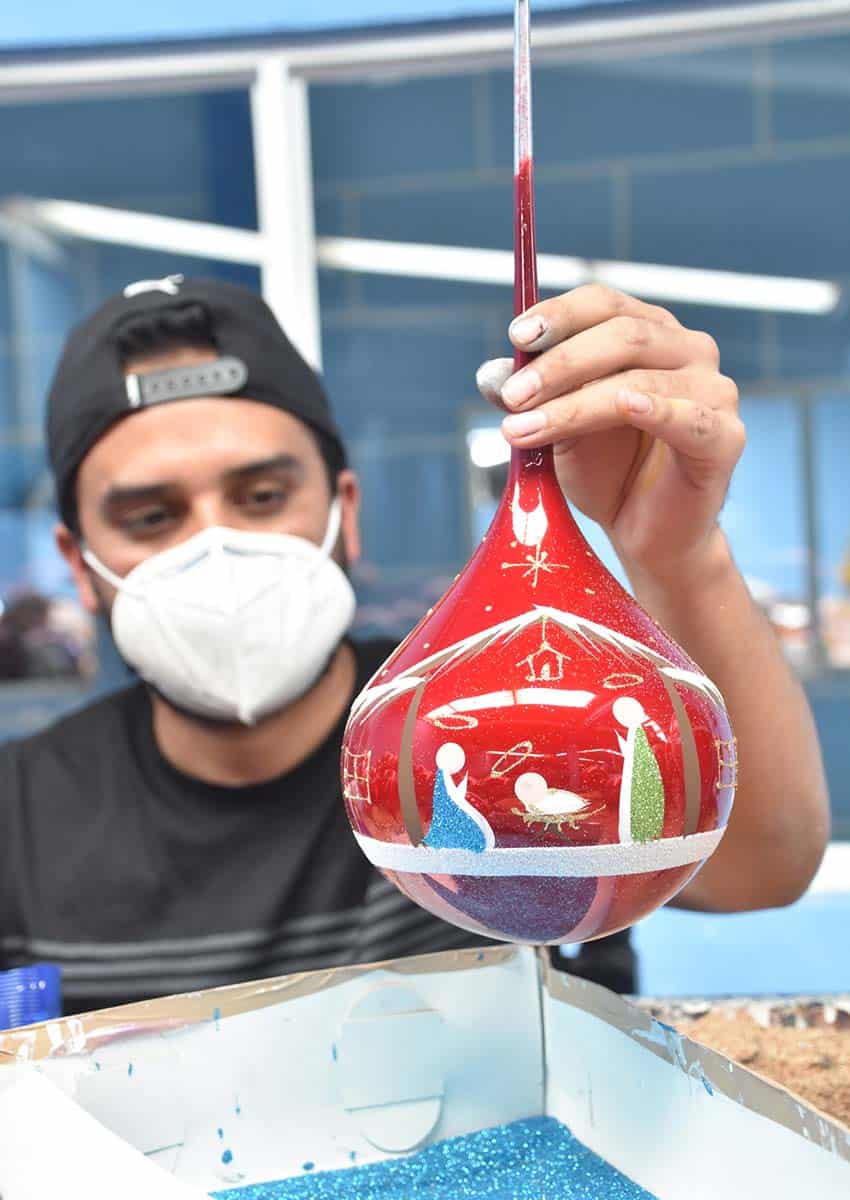
Jimy Brian Romero was decorating a trompo (a top). “If you have the talent can learn in about a week” he said. “You must have technical skill.”
Nearby, Orlando Reyes was painting a Nacimiento (a Nativity scene) onto a trompo. While he paints 150 to 200 of these a day, Reyes said he recently made 100 Nacimientos in three days, despite the process being slow and detail-oriented.
“As you can see,” he said, “it is painted in parts, and one must let the part dry before adding more.”
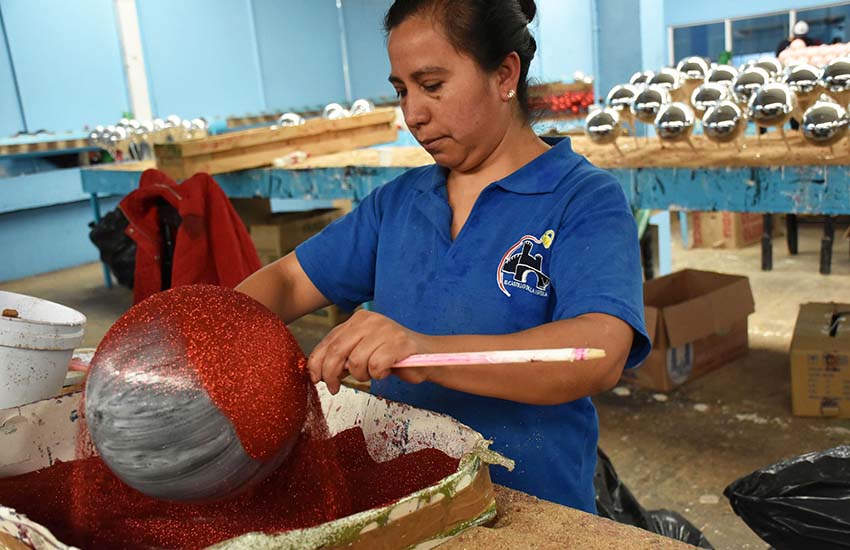
At another station, Gabriella Tellez coated large black plastic bulbs with glue and then poured on red diamanita (sparkles).
The Castillo also has a metal workshop where a variety of bases are made from which esferas can be hung. Paul Hernandez has worked there six months, making 120 a day.
All esferas are handmade. “The tradition is to make these by hand and to provide employment,” said Amezcua.
The company has about 200 employees who make 1,500 different styles of esferas and produce five million a year. There are tours every day and at the end, people can go to the store where there are thousands of esferas to choose from.
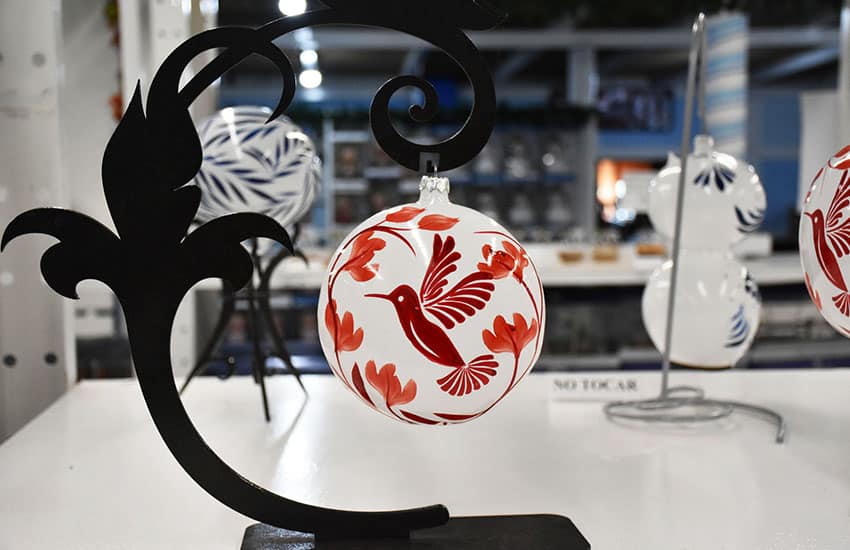
If you want to tour Castillo de la Esfera yourself, Chignahuapan is about two hours north of Puebla City. Castillo de la Esfera is located at Carretera Chignahuapan-Zacatlán, Km.2. The town is also a Magical Town, so all in all it makes a charming visit, especially at Christmastime.
Joseph Sorrentino, a writer, photographer and author of the book San Gregorio Atlapulco: Cosmvisiones and of Stinky Island Tales: Some Stories from an Italian-American Childhood, is a regular contributor to Mexico News Daily. More examples of his photographs and links to other articles may be found at www.sorrentinophotography.com He currently lives in Chipilo, Puebla.
